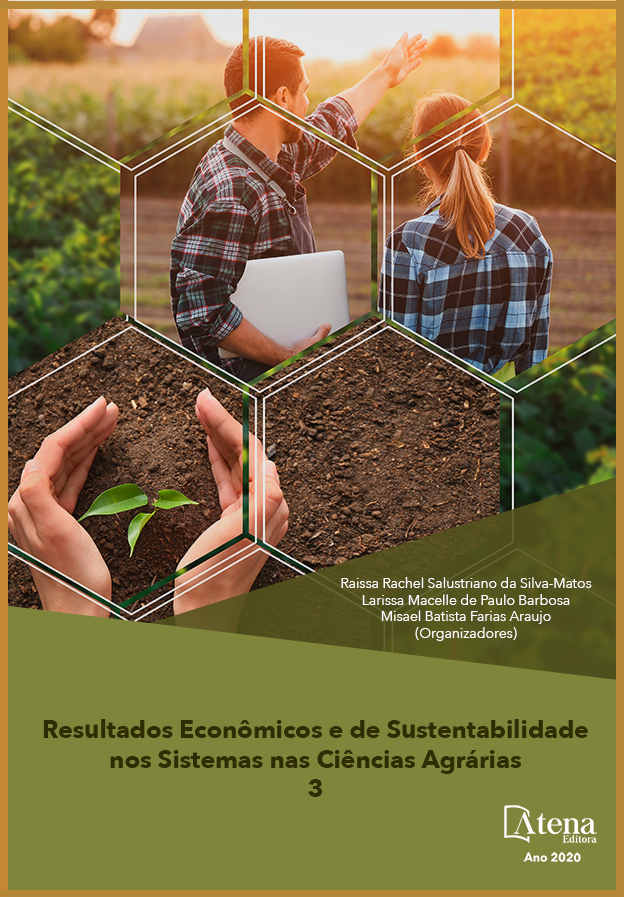
FATORES QUE INFLUENCIAM A TAXA DE PRENHEZ DE VACAS SUBMETIDAS A IATF
A inseminação artificial em tempo fixo (IATF) quando utilizada na rotina da fazenda em conjunto com fatores relacionados à sanidade e nutrição, devem impactar positivamente os índices reprodutivos do rebanho. Protocolos para a sincronização do estro e da ovulação, nos quais eliminam a necessidade de observação de cio e diminuem os efeitos da característica racial tendem a um melhor resultado, porém, não elimina a necessidade da habilidade do inseminador. O presente trabalho teve por objetivo descrever os resultados de um protocolo de IATF nas vacas da leiteria da Universidade Estadual do Centro-Oeste. Utilizaram-se seis fêmeas bovinas da raça Jersey com idade entre dois a seis anos, pesando entre 350 a 400 kg, com ECC entre 2 e 3, que foram submetidas ao protocolo de IATF. No D0 colocação do dispositivo intra-vaginal de progesterona (P4), 1 g (único uso) e 2 mg de benzoato de estradiol (BE), intramuscular. No D7, remoção do implante de P4 e administração de 0,5 mg de PGF2α e 1 mg de Cipionato de estradiol (CE), ambos pro via intramuscular. A IA foi realizada no D9 e o diagnóstico de gestação, por meio de exame ultrassonográfico, 60 dias após IA. As inseminações e os diagnósticos foram realizados pelos alunos do curso de Medicina Veterinária. O protocolo obteve taxa de prenhez de 0%. O insucesso resultante do protocolo de IATF pode estar relacionado ao uso de uma combinação hormonal de respostas ineficientes para as características da raça empregada. Os fármacos foram selecionados de acordo com os recursos disponíveis. Há maiores indícios dos resultados ruins estarem relacionados ao fato dos animais terem sido inseminados pelos acadêmicos de Medicina Veterinária, que estavam em treinamento para realização dessa biotécnica. Frente ao exposto, a habilidade do inseminador, a nutrição, além da escolha do protocolo hormonal de acordo com a categoria animal, são fundamentais para obtenção de resultados satisfatórios.
FATORES QUE INFLUENCIAM A TAXA DE PRENHEZ DE VACAS SUBMETIDAS A IATF
-
DOI: 10.22533/at.ed.7682011128
-
Palavras-chave: Sincronização do estro, gestação, bovino.
-
Keywords: Estrous synchronization, gestation, bovine.
-
Abstract:
Fixed-time artificial insemination (FTAI) when used in the farm routine in conjunction with factors related to health and nutrition, should positively impact the herd's reproductive indices. Protocols for the synchronization of estrus and ovulation, in which they eliminate the need for estrous observation and reduce the effects of the racial characteristic tend to have a better result, however, it does not eliminate the need for the inseminator's ability. The present study aimed to describe the results of a FTAI protocol in dairy cows at the State University of the Midwest - Paraná. Six Jersey bovine females aged between two and six years, weighing between 350 and 400 kg, with body condition score between 2 and 3, were used and submitted to the FTAI protocol. In D0 placement of the intra-vaginal progesterone implant (P4), 1 g (single use) and 2 mg of estradiol benzoate, intramuscular application. In D7, removal of the P4 implant and administration of 0.5 mg of PGF2α and 1 mg of estradiol cypionate, both by intramuscular application. The AI was performed at D9 and the pregnancy diagnosis, through ultrasound examination, 60 days after AI. Inseminations and diagnoses were made by students of the Veterinary Medicine course. The protocol obtained a pregnancy rate of 0%. The failure resulting from the IATF protocol may be related to the use of a hormonal combination of inefficient responses to the characteristics of the employed breed. Drugs were selected according to available resources. There is greater evidence of the poor results being related to the fact that the animals were inseminated by the veterinary medicine students, who were in training to perform this biotechnology. In view of the above, the inseminator's ability, nutrition, in addition to choosing the hormonal protocol according to the animal category, are essential to obtain satisfactory results.
-
Número de páginas: 15
- Mayara Silvestri
- Gabriel Vinicius Bet Flores
- Carla Fredrichsen Moya


